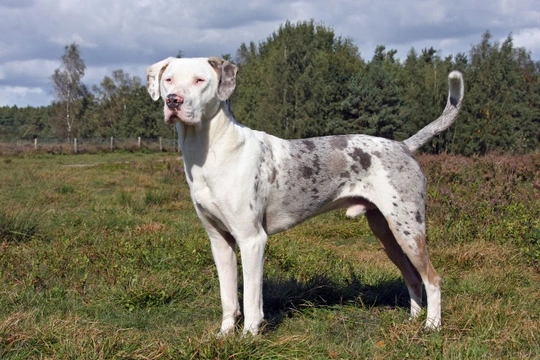
3 Dog Breeds that Break the Norm
There are many extraordinary looking breeds around, some are hairless, others with very wrinkly skin with folds around their faces and then there are those that boast extremely unusual coats. However, there are certain breeds that break the mould when it comes to their looks and these dogs really do stand out from any other breeds, but it must be said they also tend to be quite lesser known other than in their native countries. Below are three such lesser known breeds that are making their mark on the world thanks to the fact they certainly break the norm when it comes to their striking physical traits.
The Catahoula Leopard Dog
Catahoula Leopard Dogs are quite extraordinary to look at and they have always been highly prized in America and more particularly in Louisiana where they are known to be skilled hunting dogs. They have an interesting ancestry in that the Spanish Mastiff and Greyhounds were crossed with various native American breeds. They are tough characters too because they were bred to hunt and track down hogs and cattle. They have extremely striking coats which can be brindle, spotted, patched or solid, but it is their paws that really set them apart from other breeds in that the Catahoula Leopard Dog has webbed feet which means they are very adept swimmers. Having webbed feet also means these dogs can work well on marshier ground.
Another striking physical trait is the fact that Catahoulas have such beautiful eyes which can be green, blue, amber or brown depending on their coat colours. Some dogs even have odd coloured eyes with some even have what is called "cracked" eyes which describes how one eye can be two colours. These unusual looking dogs have been a firm favourite in Louisiana where they are the state's official dog and being medium in size they have always been popular pets too, but they are starting to make their mark in other countries of the world too.
The Catalburun
The Catalburum is an extraordinary dog that to date remains pretty much unknown outside of their native Turkey. These attractive dogs boast having split noses and indeed are referred to as being "Split Nose Pointers". It is a distinctive trait that makes the breed stand out from others. They are also often referred to as being Turkish Pointers and are today among one of the rarest breeds on the planet with some people thinking there may only be a few hundred dogs left in the world.
The Catalburun is not recognised as a breed in its own right by The Kennel Club although as previously mentioned they are highly prized in Turkey for being highly skilled gundogs that boast a loyal and calm nature. It is thought the breed first arrived on British shores as far back as the seventeenth century.
Norwegian Lundehund
The Norwegian Lundehund has always been highly prized in their native Norway for being an extremely agile acrobat thanks to the fact these attractive dogs have six toes on each paw with the added bonus of them being double or triple jointed. They also have extra-long dewclaws which allows the Norwegian Lundehund to scale and climb cliffs like no other dog and they did so to get at Puffin's eggs on a remote island off Norway. Although highly prized in Norway as well as in other Scandinavian countries, the Lundehund is not so well known in other parts of the world including the UK although they do make great companions with the proviso that a back garden is secure and boasts a fence that a Lundehund would not be able to scale.
These dogs were first discovered on a remote Norwegian island and quickly made an impression on people who witnessed them scaling cliff walls to retrieve eggs out of Puffin's nests. The Lundehund is a mischievous, cheerful character and a dog that likes to get into everything. However, the breed is notoriously difficult to housetrain which is something to bear in mind if you are planning to share your home with one of these extraordinary dogs. The other thing is that Norwegian Lundehunds also shed copious amounts of hair throughout the year so not a good choice for anyone who is very house proud.



